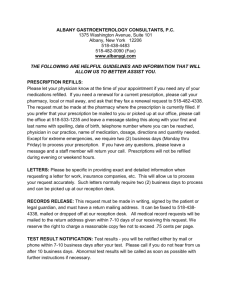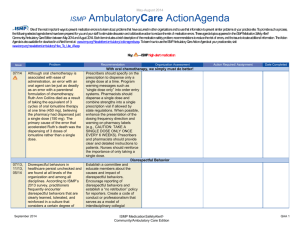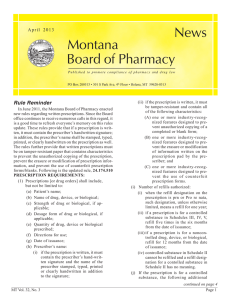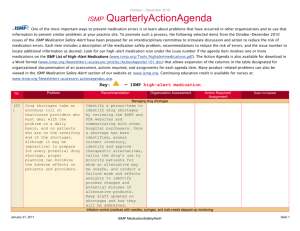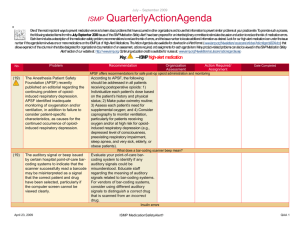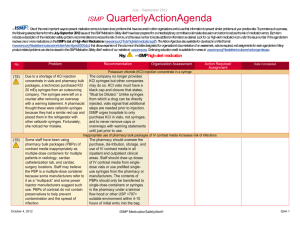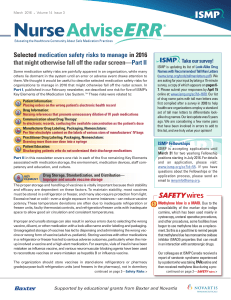Are We Speaking The Dame Language?
advertisement
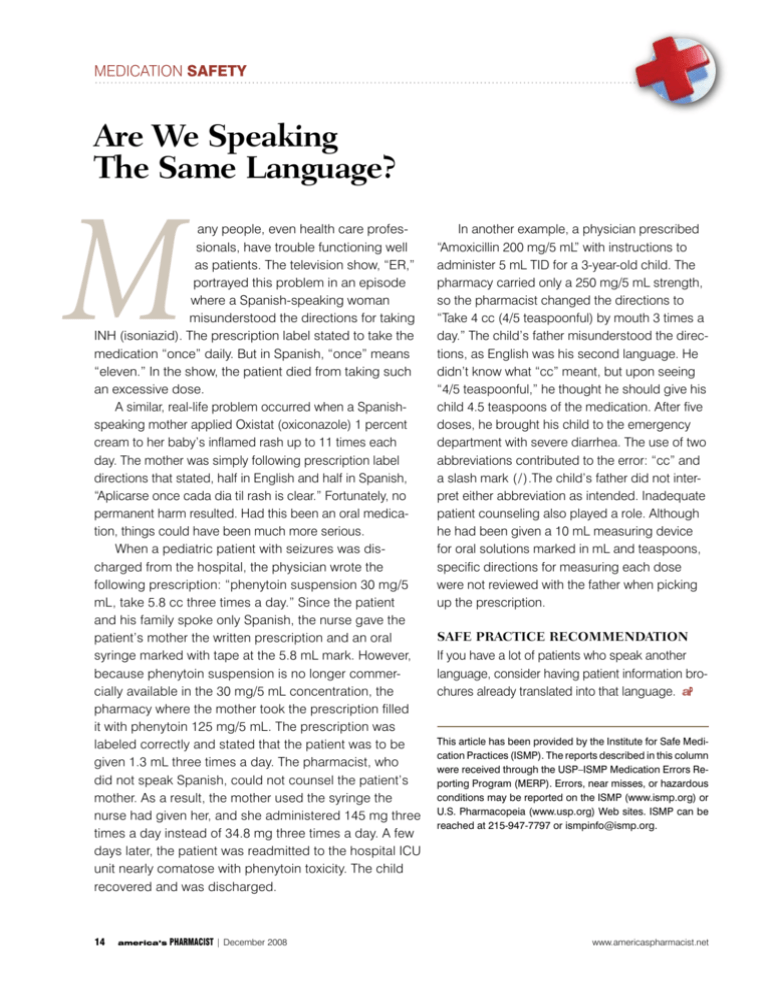
MEDICATION SAFETY Are We Speaking The Same Language? M any people, even health care professionals, have trouble functioning well as patients. The television show, “ER,” portrayed this problem in an episode where a Spanish-speaking woman misunderstood the directions for taking INH (isoniazid). The prescription label stated to take the medication “once” daily. But in Spanish, “once” means “eleven.” In the show, the patient died from taking such an excessive dose. A similar, real-life problem occurred when a Spanishspeaking mother applied Oxistat (oxiconazole) 1 percent cream to her baby’s inflamed rash up to 11 times each day. The mother was simply following prescription label directions that stated, half in English and half in Spanish, “Aplicarse once cada dia til rash is clear.” Fortunately, no permanent harm resulted. Had this been an oral medication, things could have been much more serious. When a pediatric patient with seizures was discharged from the hospital, the physician wrote the following prescription: “phenytoin suspension 30 mg/5 mL, take 5.8 cc three times a day.” Since the patient and his family spoke only Spanish, the nurse gave the patient’s mother the written prescription and an oral syringe marked with tape at the 5.8 mL mark. However, because phenytoin suspension is no longer commercially available in the 30 mg/5 mL concentration, the pharmacy where the mother took the prescription filled it with phenytoin 125 mg/5 mL. The prescription was labeled correctly and stated that the patient was to be given 1.3 mL three times a day. The pharmacist, who did not speak Spanish, could not counsel the patient’s mother. As a result, the mother used the syringe the nurse had given her, and she administered 145 mg three times a day instead of 34.8 mg three times a day. A few days later, the patient was readmitted to the hospital ICU unit nearly comatose with phenytoin toxicity. The child recovered and was discharged. 14 america’s Pharmacist | December 2008 In another example, a physician prescribed “Amoxicillin 200 mg/5 mL” with instructions to administer 5 mL TID for a 3-year-old child. The pharmacy carried only a 250 mg/5 mL strength, so the pharmacist changed the directions to “Take 4 cc (4/5 teaspoonful) by mouth 3 times a day.” The child’s father misunderstood the directions, as English was his second language. He didn’t know what “cc” meant, but upon seeing “4/5 teaspoonful,” he thought he should give his child 4.5 teaspoons of the medication. After five doses, he brought his child to the emergency department with severe diarrhea. The use of two abbreviations contributed to the error: “cc” and a slash mark ( / ).The child’s father did not interpret either abbreviation as intended. Inadequate patient counseling also played a role. Although he had been given a 10 mL measuring device for oral solutions marked in mL and teaspoons, specific directions for measuring each dose were not reviewed with the father when picking up the prescription. Safe Practice Recommendation If you have a lot of patients who speak another language, consider having patient information brochures already translated into that language. This article has been provided by the Institute for Safe Medication Practices (ISMP). The reports described in this column were received through the USP–ISMP Medication Errors Reporting Program (MERP). Errors, near misses, or hazardous conditions may be reported on the ISMP (www.ismp.org) or U.S. Pharmacopeia (www.usp.org) Web sites. ISMP can be reached at 215-947-7797 or ismpinfo@ismp.org. www.americaspharmacist.net




